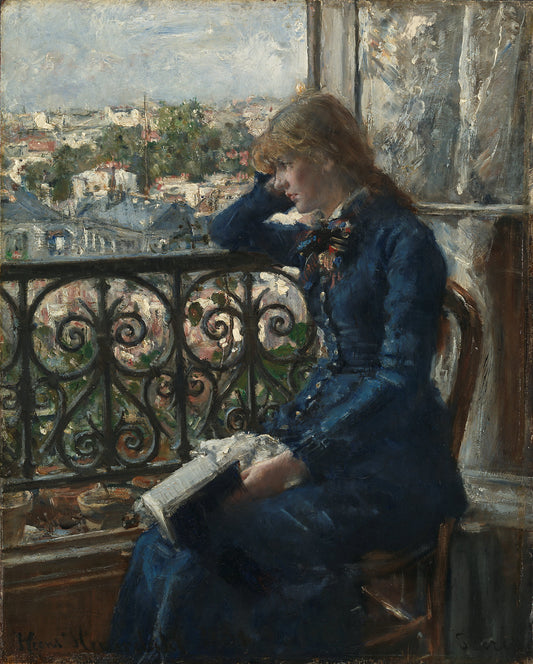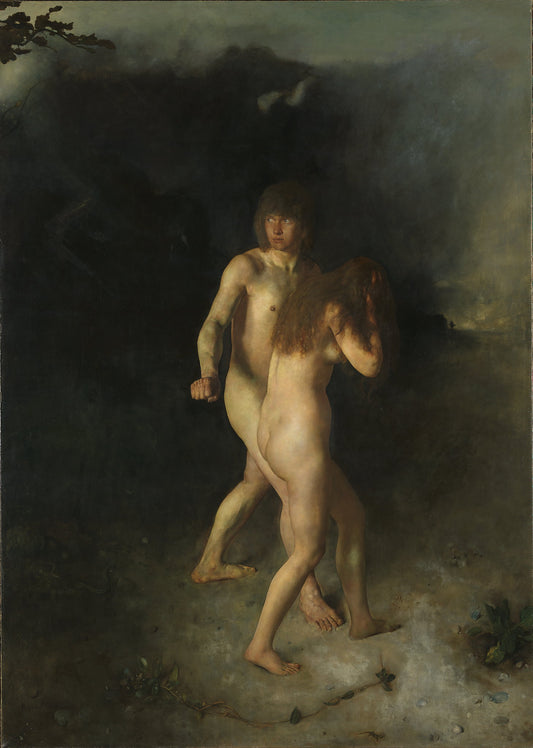Hans Heyerdahl
Adam and Eve are driven out of Paradise
Adam and Eve are driven out of Paradise
Couldn't load pickup availability
About the original:
Date: 1877
Other titles: The Expulsion from Paradise (ENG)
Designation: Painting
Material and technique: Oil on canvas
Technique: Oil
Material: Canvas
Dimensions: 257 x 183 cm
Subject: Visual arts
Classification: 532 - Visual arts
Motif: Biblical
Type of motif: Religious scene or person
Inventory no.: NG.M.02207
World Exhibition in Paris, 1878
Owner and collection: The National Museum of Art, Architecture and Design, Visual Art Collections
Photo: Børre Høstland/Jacques Lathion
High-quality reproductions from the National Museum's collection. Posters by DAIDDA are printed on Litho White Matt - 230 gram photo paper in premium quality. Artprints by DAIDDA are printed on Moab Entrada Natural 300 gram cotton art paper in premium quality. Produced by DAIDDA.
Shipping and returns
Shipping and returns
Shipping: We deliver to Scandinavia, the EU, the USA and several other countries. Please contact us if your country is not listed and we will try to arrange delivery.
Delivery time: 2-5 days within Norway, 7 days in Europe, 14 days globally.
Packaging: Our products are made to order and sent rolled in environmentally friendly packaging.
Customs Fees: International orders may be subject to customs fees, which are not included in shipping costs.
Return policy: You can return images within 14 days. See our returns page for more information.
Secure Payment: We never store your payment details. See our privacy policy for details.

See all works
-
By the window
Vendor:Hans HeyerdahlRegular price From 150,00 NOKRegular priceUnit price per -
Adam and Eve are driven out of Paradise
Vendor:Hans HeyerdahlRegular price From 150,00 NOKRegular priceUnit price per

Hans Heyerdahl
Hans Heyerdahl was a Norwegian naturalist painter. He was born in Dalarna in Sweden, was the son of Halvor Heyerdahl (1825–1900) and grew up in Drammen. After a couple of years at Bergslien's painting school, he went to Munich in 1874, where he attracted attention with the superbly executed composition Adam and Eve driven out of Paradise (1877).
In 1878–1882 he was in Paris as a pupil of Léon Bonnat, but also studied the old masters, especially Rubens, a study he continued in Florence 1882–1884, where Arnold Böcklin's myth-writing art also became decisive for him. In the Paris period, he painted, in addition to the large realistic composition The Dying Child, which was bought by the French state, a number of picturesquely rich figure studies, scenes and portraits, Laura Gundersen (1879), Ved vindentet, (1881), The Champagne Girl (circa 1880 ). In 1885 he returned home. In Åsgårdstrand he painted bright summer pictures such as Sisters and Bathing Boys (both 1887), and at the studio in Oslo masterpieces such as Arbeiderens død (1888) and the dazzlingly skillfully painted nude study Svart-Anna (1887). Even later, Heyerdahl could reach high, particularly as a portrait of women, but his impressionable talent not infrequently went astray during the neo-romantic and symbolist currents of the 1890s. In later years, he stayed mostly in Paris and depicted Montmartre in a number of pictures. Heyerdahl is richly represented in Drammen's Museum of Art and Cultural History, the National Museum/National Gallery in Oslo owns 41 pictures of him.



